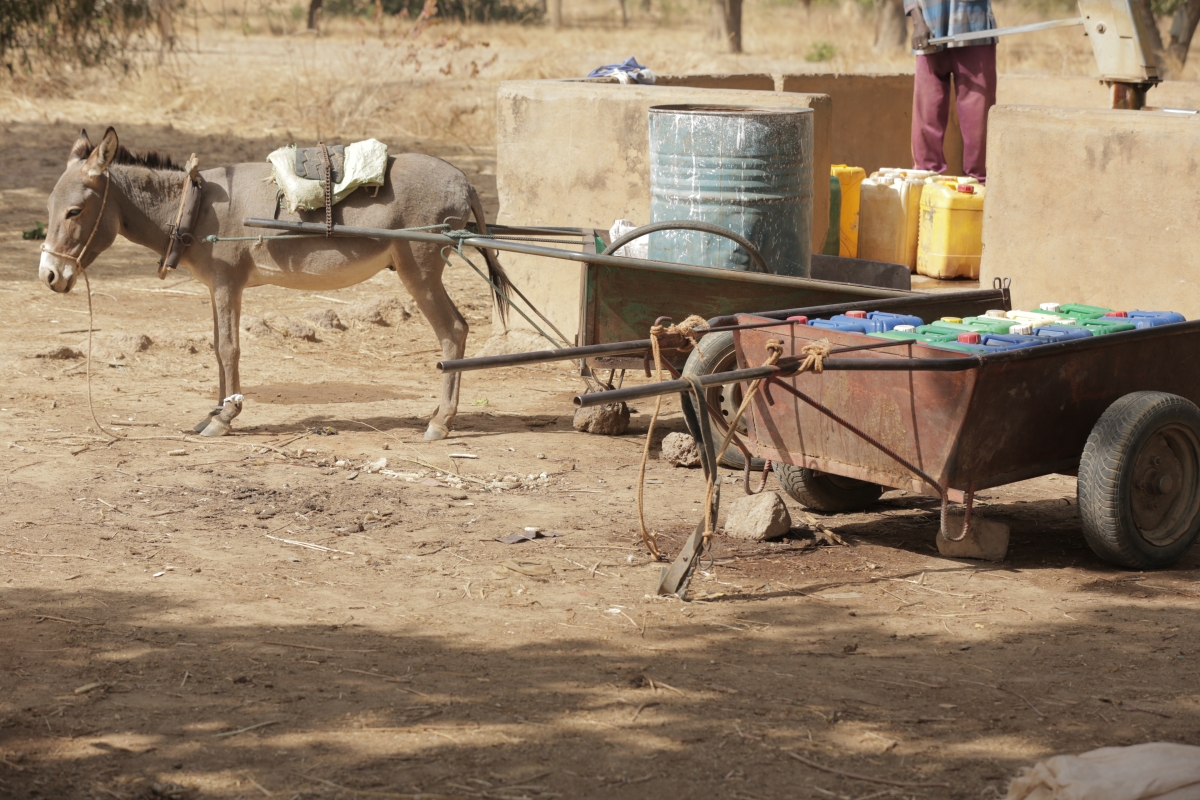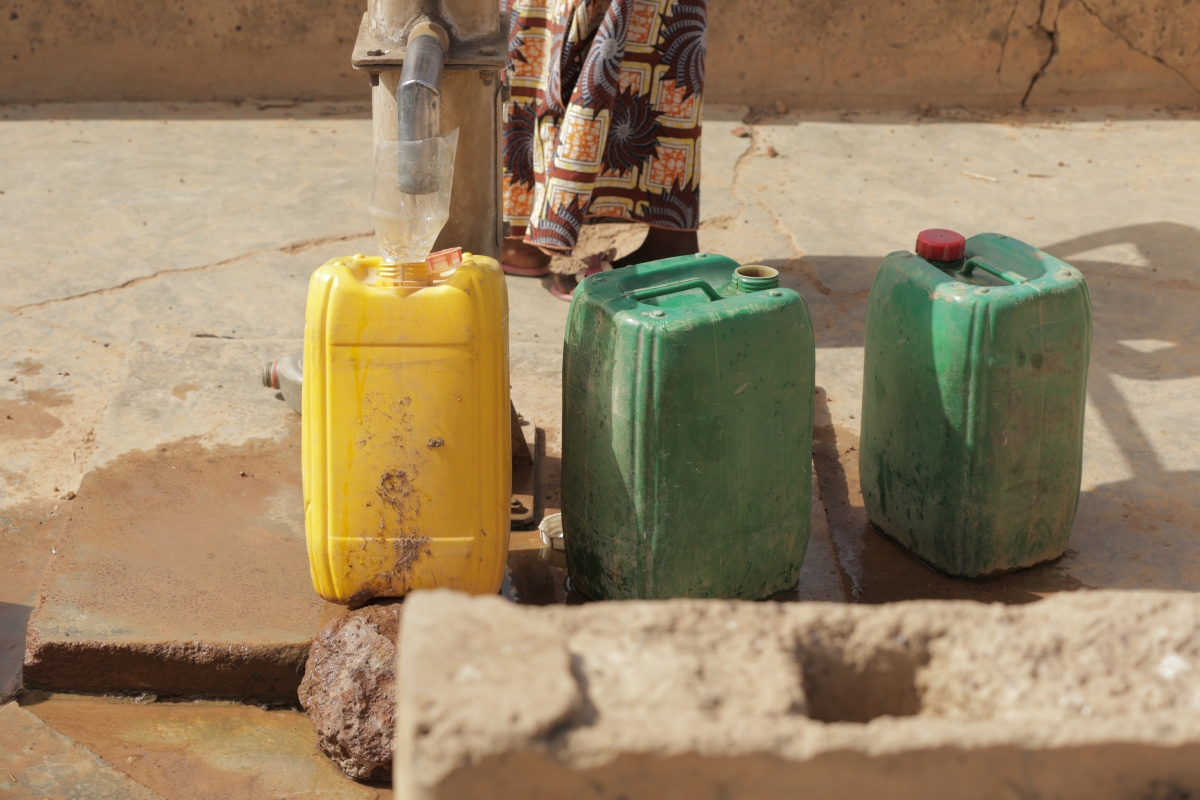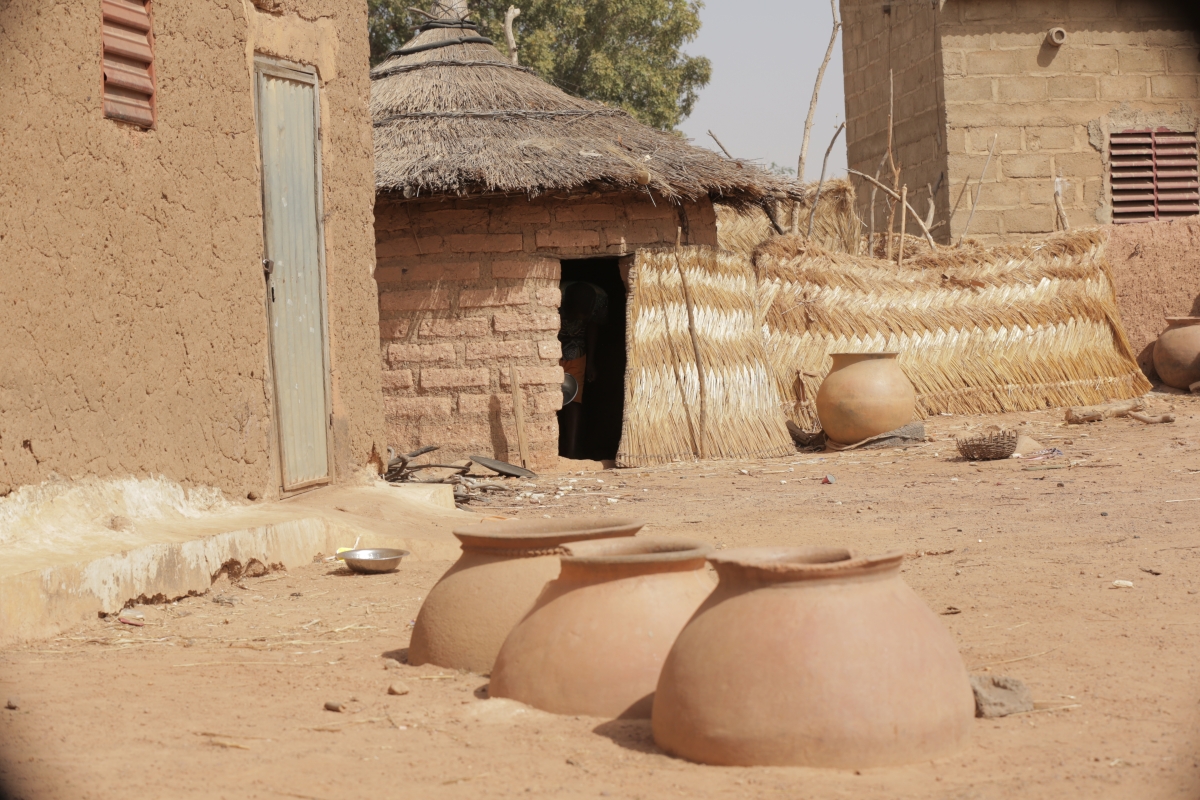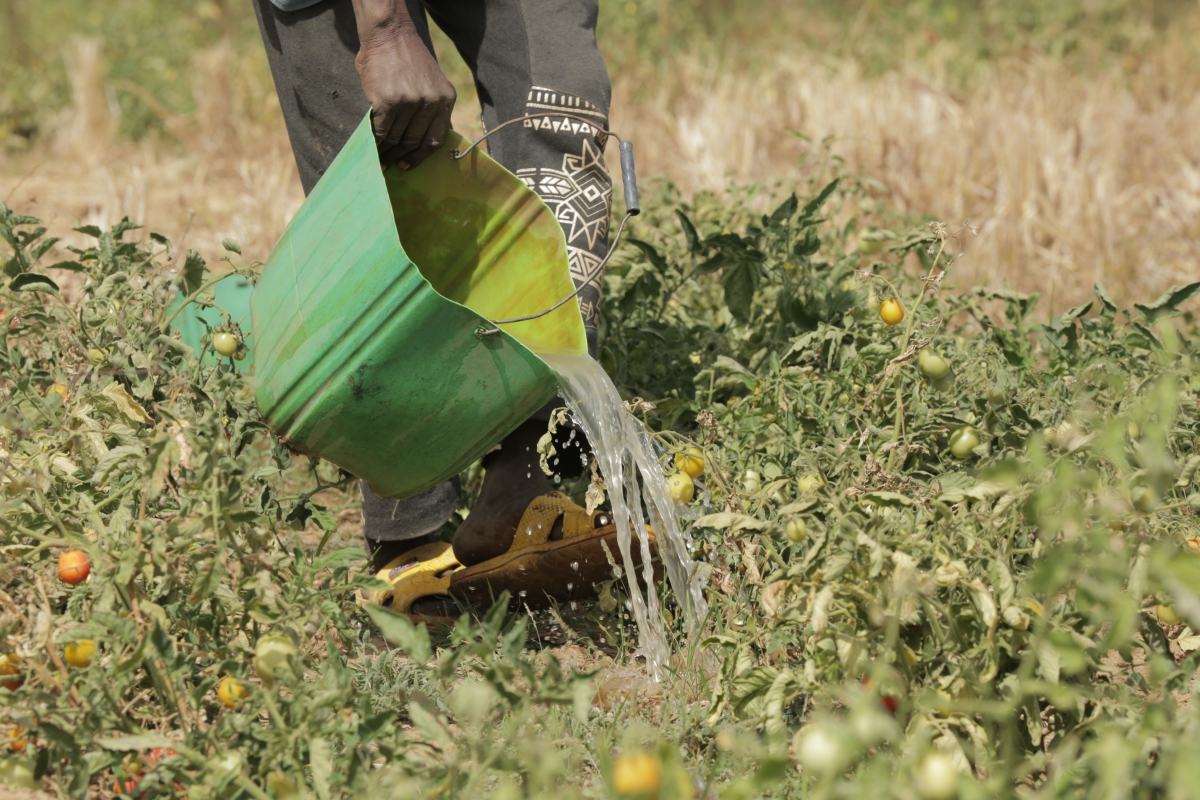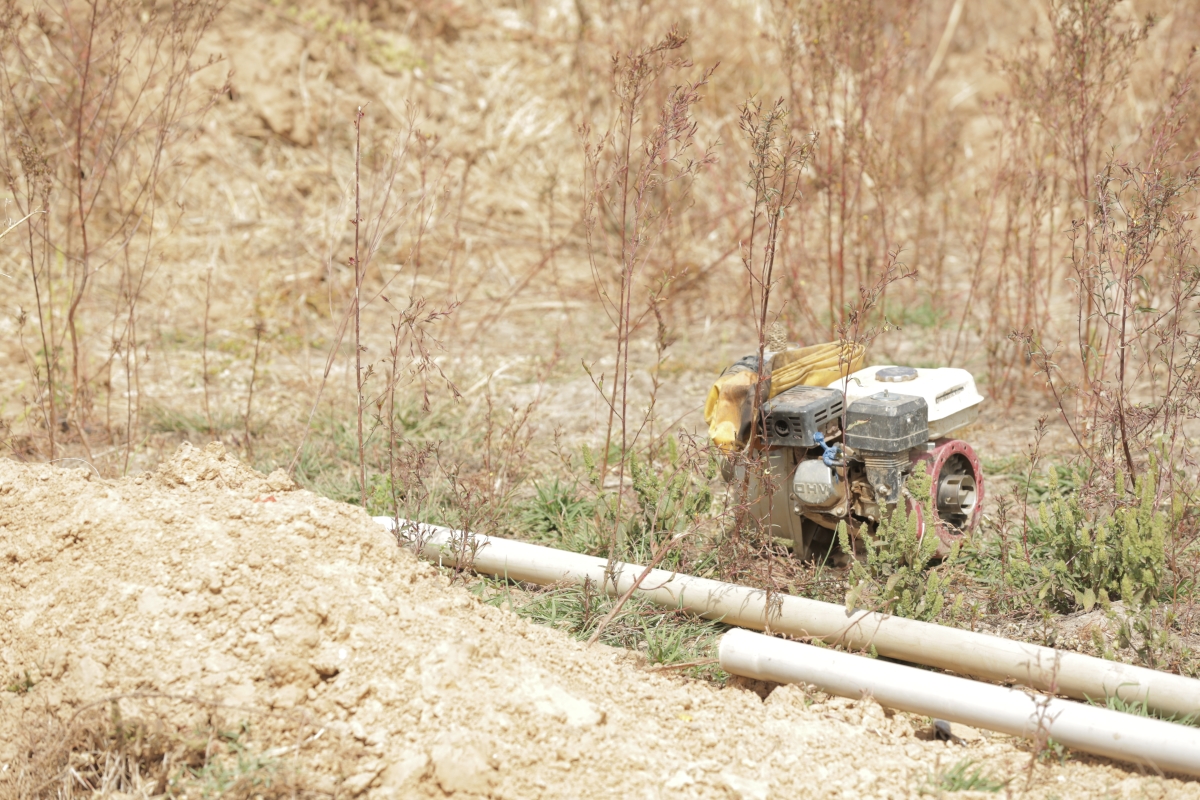Research reveals influence of gender, livelihood on water insecurity stress in West Africa

A woman and child watering their garden in a Tamissi village. Photo by AWIPLAY Group
In Burkina Faso, located in the Sahel region of West Africa, the amount of safe water available for homes depends on seasonality and rainfall. But how individuals experience the abundance or lack of said water may depend on their gender and livelihood, according to new research from Elisabeth Kago Ilboudo Nébié, assistant professor at Arizona State University's School of Human Evolution and Social Change.
Previous water insecurity research focused only on the perspective of women in the Sahel region. However, in their research, IIboudo Nébié and colleagues took a different approach, looking at both genders — in the form of husband-and-wife pairs — and their respective livelihoods.
“This study is one of the very few comparative studies on water insecurity experience looking at the relationship between gender and livelihood in a semi-arid region affected by the effects of climate change in West Africa,” IIboudo Nébié said.
“Why Livelihoods Matter in The Gendering of Household Water Insecurity” was published this month in the journal Weather, Climate, and Society.
ASU News spoke with IIboudo Nébié about this research.
Question: What is the key takeaway of your research?
Answer: Past research has emphasized women’s greater responsibilities for water-related tasks — housework, fetching water and cooking — and described women’s harmful experiences of water insecurity. Our study examines husbands’ and wives’ experiences of water insecurity within the same household. We found nuances in water insecurity experiences within households. The spousal divergence in perceptions of water insecurity suggests that livelihood strategy matters. In our research, women crop farmers reported more water insecurity compared to their husbands — consistent with previous studies — but men herders reported more water insecurity compared to their wives, suggesting that depending on the livelihood, gender experience of the severity of water insecurity may differ.
Livelihood strategies are activities — farming, herding, income-generating activities — assets and abilities that enable individuals or households to sustain their living. Using a livelihood lens here refers to examining how these livelihood strategies positively or negatively affect water insecurity experiences.
This study suggests that research designs should examine intra-household dynamics and only generalize findings to the respondent, and not the entire household. This finding seeks to improve how water insecurity is understood and operationalized in research, development and policies in drylands where water scarcity is a key challenge for crop and livestock production in times of rainfall variability.
Q: What did your research uncover about the relationship between water insecurity and gender?
A: We found that water insecurity experiences are not only highly gendered, but also vary depending on the livelihood strategy each household engages in, along with their differing needs for and use of water. Households growing crops have differing water needs and uses compared to those raising livestock. In our study, crop farmer households were generally larger and consumed more water for all domestic uses compared to livestock farmers with smaller households.
In Fulani herding households, securing water for livestock was usually men’s responsibility. Fulani men move livestock across landscapes, sometimes even beyond national borders to look for water and pasture. They increasingly have to travel longer distances because of rainfall variability and social, political, economic and security challenges. This adds more stress on men to secure water.
Q: How do the people in this region gather water; where does it come from?
A: In the study site, there are many water sources. Tube-protected wells or boreholes, protected spring water and rainwater collection are primary sources for domestic uses followed by surface water, unprotected spring and unprotected borehole water, among others.
Water is transported on heads, bicycles, donkey carts and motorbikes. The means of transporting water differed by gender, livelihood activity and ethnicity. For instance, women did not typically transport water on motorbikes because most of them do not own motorbikes.
Water is stored in different types of containers generally bought or borrowed from acquaintances.
Q: How did you conduct the research for this paper?
A: This paper was co-authored with my colleagues, Regents Professor Alexandra Brewis and President’s Professor Amber Wutich, at Arizona State University. Other co-authors included Yogo Pérenne and Kadidiatou Magassa.
Interviews were administered to both wives and their matched husbands who had primary or significant responsibility for key household water-related tasks such as fetching water, watering animals, plants, preparing meals, doing laundry and cleaning the home. This was quite important because in many research projects, there is a focus on one person by household — usually the head of household. Here, we wanted to learn from the perspectives of both: husband and wife.
Data was collected by a male (third author Yogo Pérenne) and female research assistants who interviewed people from the same gender in both crop farmer and livestock farmer households.
Q: Aside from water insecurity, are there other topics within households that could be explored using this methodology?
A: Yes, food insecurity, which is closely connected to water insecurity, can also be explored with a similar approach, especially interviewing both men and women within the same household. We looked at the Household Food Insecurity Access Scale in this study, but to a lesser extent. We found that gender did not predict different reported levels of food insecurity.
Q: Where does the research go from here?
A: On the one hand, we would be interested in looking at water sharing in the same community. On the other hand, we are also interested in conducting similar studies in other regions within the country or in neighboring countries to compare and contrast findings from this study.
More Local, national and global affairs

ASU selected to support DOD Irregular Warfare Center
Arizona State University has been selected to work closely with the U.S. Department of Defense to provide reputable academic research support to deepen the understanding of current and emerging…

Inspired by university tradition, a new lantern walk debuts with focus on mental health in the military
Arizona State University’s Lantern Walk is one of the school’s oldest and most treasured traditions. Each year, students, alumni and the Sun Devil community trek up “A” Mountain carrying lanterns to…
ASU-led study examines effects of political turmoil on young voters
Young adults approaching voting age in the U.S. are doing so in a political climate unlike any other.Over the past four years, growing party polarization and hot-button issues have been the topic of…

